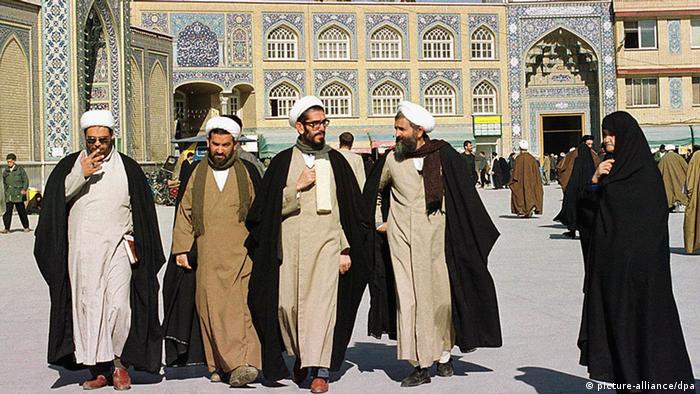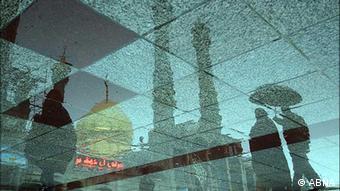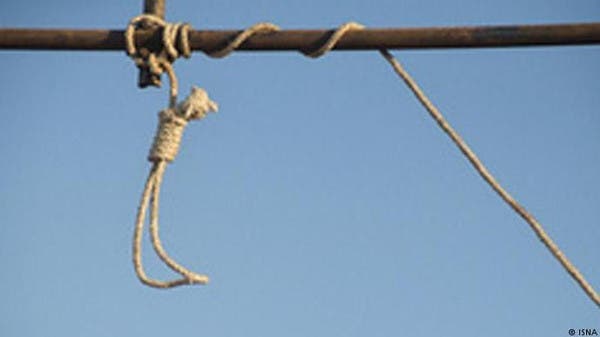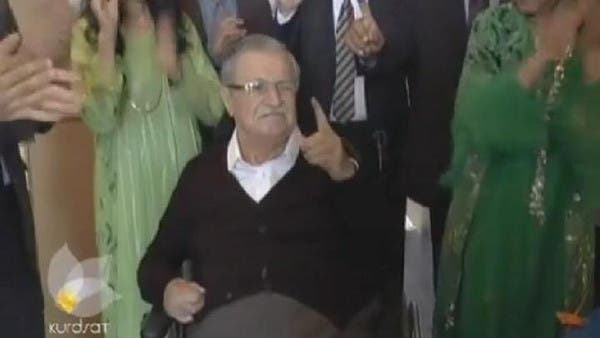Taftan, at 4,042 meters the highest peak in Iran’s Sistan-Baluchestan province, is a partially dormant volcano and a metaphor for Iran’s poorest and perhaps most volatile region.
Bordering Pakistan and Afghanistan, Sistan-Baluchestan is known for lawlessness born partly of smuggling, especially of narcotics from the east. It also faces a long-running, “low-level” insurgency of militant groups fusing Baluch nationalism with Al-Qaeda language and practices, including beheadings.
A two-hour flight from Tehran, the region highlights Iran’s ethnic and geographical variety, with men in the provincial capital Zahedan wearing the “shalwar kameez” that assert the identity of the Baluchi, who are divided between the three countries.
Even more important for Iran’s Shiite Islamic regime is that Baluchis, like the Kurds of western Iran, are among the Sunni Muslims who make up at least 10 percent of the country’s 76 million, overwhelmingly Shiite population. Both Baluchis and Kurds speak distinct languages.
As such, they are an important test for the “nationalities” policy of any government. While all Iranians share deep cultural links, Persians make up only around 50 percent of the population, while some members of ethnic minorities say the minorities face discrimination, especially in government jobs and investment.
In last year’s presidential election,
Hassan Rouhani promised a general charter of rights and, with it, largely unspecified improvements for ethnic minorities. He received clear backing from Abdul-Hamid Esmaeel-Zehi, the popular Sunni Friday prayer leader in Zahedan, and won 74 percent of votes in Sistan-Baluchestan compared to 51 percent across Iran.
But the draft charter, published in November, disappointed many by generally reiterating rights already in the constitution, and Rouhani faced a challenge in February when Jaish al-Adl, a militant Baluchi group, captured five Iranian border guards and threatened to execute them unless the authorities released 300 prisoners.
Part of the problem was that four years ago, the Iranian authorities proclaimed the end of the Baluchi insurgency when they captured and executed Abdul-Malik Riggi, the leader of Jundallah, a forerunner of Jaish al-Adl. The kidnappings followed a rising number of attacks, including one last October when Jaish al-Adl killed 14 border guards. The fate of the hostages prompted a wave of concern, including a social media campaign, across Iran. Rouhani appealed to Abdul-Hamid to mediate, and the cleric seems to have played a role in securing the release of four guards, although one was executed.
In a subsequent visit to Zahedan, Rouhani was warmly welcomed. In a speech on April 15, he addressed the nationalities question in general terms, stressing that
Iran did not have “second-class citizens” and that Iranians of all ethnicities enjoy equal rights.
But the grievances are rather more specific. When I met Abdul-Hamid back in 2005, at his home near the large seminary he heads in Zahedan, he weighed his words in articulating injustices faced by Sunnis. “We support the Islamic Republic and are active politically,” he said. “Baluchis love Iran.”
But among problems, he cited job discrimination in Iran’s largely state-run economy. He said a failure by Mohammad Khatami, who had stepped down as president that year, to appoint Sunni cabinet members resulted from opposition from “some [Shiite] clerics in Qom who influence the government with their prejudice and bias.”
Abdul-Hamid, like others I spoke to, felt the notion of a Sunni insurgency was being overplayed in
Tehran and said most Baluchis from Iran who had fought the Russians in Afghanistan had subsequently returned to a quiet life.
Others in Zahedan told me Baluchis missed out on government posts given to Shiite Sistanis from the north of the province. Many griped over the lack of a
Sunni mosque in Tehran, a capital with churches, synagogues and Zoroastrian temples.
Sistan-Baluchestan illustrates a wider problem Rouhani faces in balancing demands from ethnic minorities against the need to maintain national unity in the face of international pressure over the nuclear program. Many in Tehran are wary of concessions to minorities, and some “principle-ist,” or conservative, newspapers criticized Abdul-Hamid for not moving earlier to secure the guards’ release.
This reflects a wider suspicion – even prejudice – of ethnic minorities among the Persian population that is ripe for exploitation by populist politicians, including those out to undermine Rouhani. Complicating matters is growing Shiite-Sunni tension internationally. Iran is surrounded by mainly Sunni countries and has long accused the United States and Saudi Arabia of trying to manipulate its Sunni minorities.
Across on the western side of Iran, some 1,500 kilometers from Sistan-Baluchestan, the Kurds have generally shown the lowest turnout in elections. Their region is similarly militarized according to a doctrine of “strategic depth” and smuggling is rife, especially with northern Iraq. As among their fellow-Sunni Baluchis, there are armed militants, including Pejak, the Party for Free Life in Kurdistan.
One grievance aired by Kurdish parliamentary deputies is that what is officially called Kordestan province in Iran covers only part of Iran’s Kurdish areas. But during government-initiated discussions on provincial boundaries in January, a suggestion from one deputy that a new “northern Kordestan” province be created with Mahabad as its capital provoked instant criticism from Azeris, who are probably a majority in West Azerbaijan province, where Mahabad is situated.
This illustrates how divisive the ethnic issue can be in Iran. The Azeris are the largest and arguably most integrated minority in Iran, with a huge presence in Tehran especially in the bazaar. Ayatollah Ali Khamenei, the supreme leader, is of partly Azeri descent. But in 2005, there were riots in Tabriz, the main Azeri city, when a Tehran magazine published a cartoon of a cockroach speaking Azeri.
For Rouhani, any option over “nationalities” policy carries risk. Appointing
Sunnis to the Cabinet or as provincial governors, or allowing a Sunni mosque in Tehran, could upset, among others, the Shiite religious establishment in Qom, at a time when the president needs to rally support for a possible nuclear deal.
Iran’s ethnic minorities are diverse and are not about to break up the country. Most Baluchis, Kurds, Azeris, Arabs, Lurs and others believe they can achieve their rights within Iran. A coalition of ethnic-based parties opposing the Islamic Republic has made no headway since establishing a Congress of Iranian Nationalities for a Federal Iran in 2005. They advocate a “federal democratic” system based on “the separation of religion and state.”
But Baluchi and Kurdish insurgencies will continue to drain security resources and increase nervousness in Tehran over real or perceived threats. Like the Taftan volcano, ethnic issues remain potentially explosive.
Gareth Smyth has reported from the Middle East since 1992, and was chief Iran correspondent of
The Financial Times in 2003-2007. He wrote this commentary for THE DAILY STAR.














 چاپ
چاپ  ايميل
ايميل




